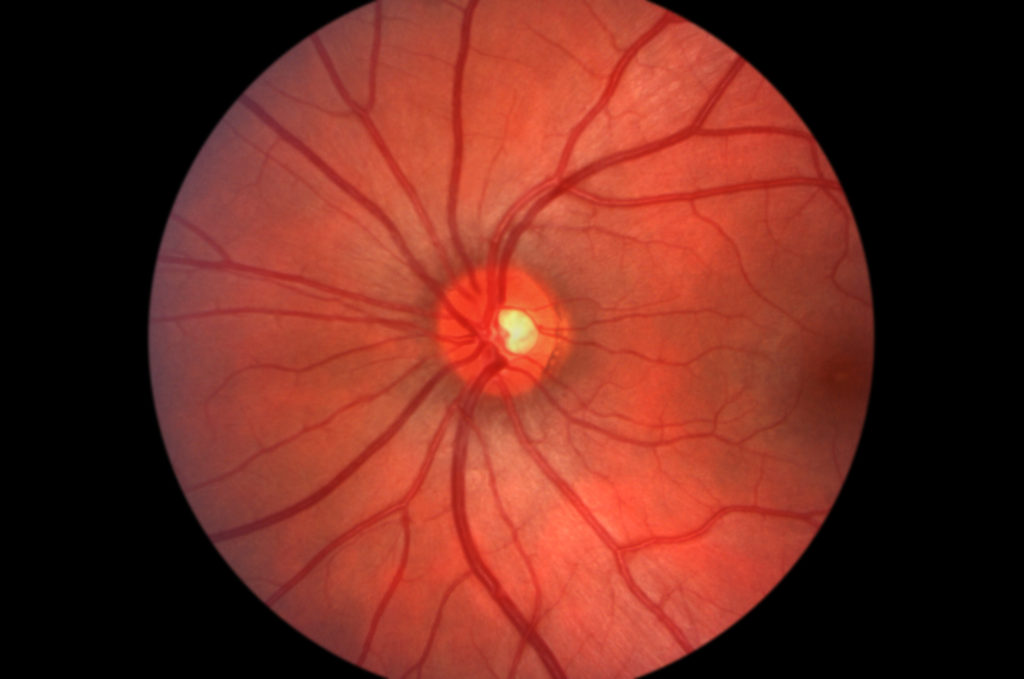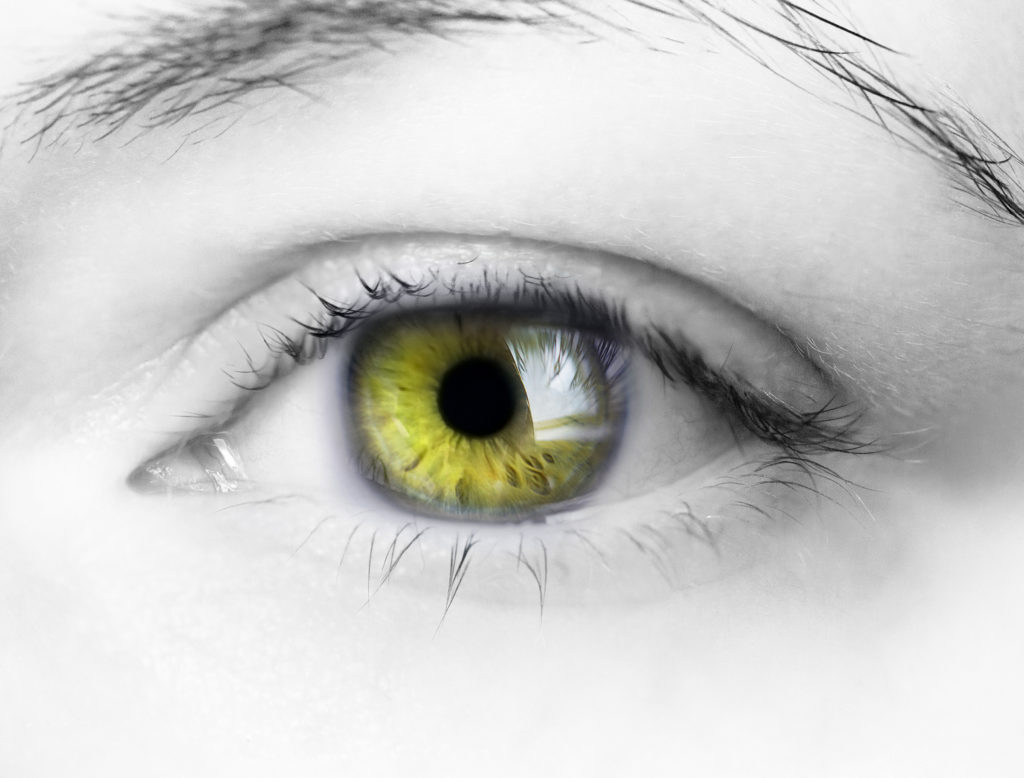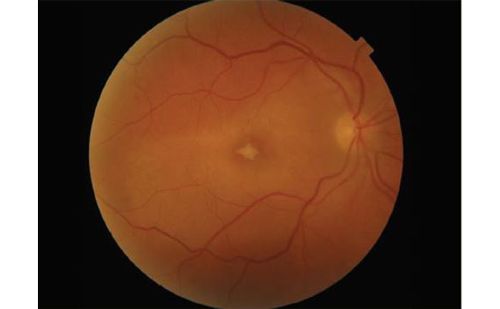Resveratrol is a polyphenol that is found in plants. It is synthesized in response to pathogenic stresses and fungal disease and forms part of a defence mechanism against infection.1 Red grapes, mulberries, and peanuts are particularly rich sources.2 A high concentration is found in red wine.
Interest in therapeutic effects of resveratrol began with the French paradox describing a lower incidence of cardiovascular events among French populations despite a high intake of dietary fat.3 Clinical studies have shown that resveratrol is a potent cardioprotective,4 chemotherapeutic,5 and neuroprotective6 agent and displays anti-aging properties.7 These effects are most likely attributable to potent anti-inflammatory and anti-oxidant properties.
Age-related macular degeneration (AMD) is the leading cause of visual loss in those over the age of 50 years in the developed world.8–11 In the US, the number of people affected by this condition is expected to increase from 1.75 million to almost three million by 2020.11 The condition is characterized in part by an uncontrolled level of oxidation, which damages cell membranes and triggers inflammation. Resveratrol may have the potential to impact on the risk for onset or progression of this condition. Developed world diets contain a very low concentration of resveratrol12 and increasingly it is being included in nutritional supplementation formulations.
This review explores the scientific evidence documenting the properties of resveratrol relevant to AMD and its potential use in ocular nutritional supplements. The evidence presented here is from published literature located through systematic searches of PubMed and Web of Knowledge.
Methods
Literature searches of PubMed and Web of Knowledge were undertaken. All searches performed were topic searches and Boolean operators were used to ensure that the results remain focused. An initial search performed on Web of Knowledge included the search criteria of resveratrol or polyphenol or phytoalexin or stilbenoid and eye or retina or ocular or vision or sight. Other searches used the criteria resveratrol and anti-inflammatory, resveratrol and antioxidant, resveratrol and retina, resveratrol and age-related macul* and were performed on Web of Knowledge and PubMed. Both databases were set to automatically filterout any search results dated prior to 1950.
The relevancy of the remaining research results was checked by evaluation of the title against the proposed line of enquiry addressed in this review, namely the retinal effects of the resveratrol. If the title proved to be ambiguous, a decision was made by the authors based on the abstract as to whether the result was relevant. By performing the research in this way, it was hoped that the results identified would be specific to the eye. However, many experiments had been performed in vitro using cultured retinal or trabecular cells. These studies were included.
To meet inclusion criteria, experimental work had to have a sound method with clear aims, stringent protocols, and a sufficiently substantial analysis together with details of numbers of subjects and appropriate statistical analysis if conducted. Significant variation was evident among the protocol deployed and the analytical techniques used even in literature pertaining to a similar topic.
Bioavailability
In common with other polyphenols, resveratrol has an extremely limited bioavailability. Although absorption is rapid13 and the extent of absorption is at least 70 % in humans,14 studies performed on rats15 have shown that resveratrol undergoes rapid metabolism in the gut prior to entering the systemic circulation. The presence of food significantly delays the absorption of resveratrol but does not alter the extent of it.16 The reduction in the concentration of resveratrol entering the systemic circulation is compounded further by recirculation between the small intestine and the liver. Metabolism occurs so rapidly that a conjugate of resveratrol was detected by high-performance liquid chromatography less than 10 minutes following intravenous infusion to human subjects. Plasma was already devoid of resveratrol in two subjects at just 30 minutes following the onset of infusion.17 The plasma concentration reached, although high (approximately 25 ng/ml), was far below the amount shown to elicit an effect in vitro (>1,000 ng/ml).7 However, resveratrol is a lipophilic compound that can be bound to the cellular fraction in blood. It is possible that its level in blood and in tissues is underestimated.18 Urinary excretion appears to be the main mode of disposal in humans.17
Safety
Studies conducted on humans to date have shown that resveratrol is safe and tolerated well. The only reported adverse effect in six human subjects who received 200 mg of resveratrol twice daily was incipient diarrhea but no clinically significant changes occurred in hematology or biochemistry.19 In 40 human subjects receiving between 25 mg to 150 mg of resveratrol six times daily,20 five subjects reported headaches. Other reported adverse effects included drowsiness, dizziness, urinary tract infections, epididymitis, dyspepsia, and nasopharyngitis, but these were all reported only in individual subjects. Isolated incidences of nasopharyngitis have been reported in two studies.16,20 Overall, adverse effects have been minor and resveratrol appears to have a good safety profile.
Inflammation and Age-related Macular Degeneration
There is an overwhelming body of evidence implicating inflammation in the pathogenesis of AMD. A review21 described an altered balance of autoimmunity, chronic inflammation, and dysregulated parainflammation as triggers. The Blue Mountains Eye Study22 found that the white blood cell count correlated positively with pigmentary abnormalities, drusen, and the incidence of early AMD. Another investigation23 revealed that the retinas of rats with experimentally induced choroidal neovascularization (CNV) contained a greater amount of lymphocyte-producing cells around the retinal vasculature compared with retinas without CNV. It is plausible that increased vascular permeability during AMD permits the influx of macrophages to the retina.
There is unequivocal evidence for involvement of the complement system. Drusen have been found to contain components of the complement cascade and other immunoreactive material.24 Hard and small drusen from eyes of postmortem AMD patients were found to contain complements known to promote vascular endothelial growth factor (VEGF) secretion in human retinal pigment epithelial (RPE) cells.25 VEGF is pro-angiogenic. A dysregulated complement system that results in angiogenesis could be a contributor to the macrophage influx. Activated complement has also been found at the outer edge of human basal laminar deposits and VEGF has been detected at the basal surface of the RPE.26 Further evidence for involvement of the complement cascade comes from studies that have shown that polymorphisms in complement factor H, an anti-inflammatory substance, predispose to AMD.27,28
Anti-inflammatory Properties of Resveratrol
There is good evidence substantiating the use of resveratrol as an antiinflammatory agent. Of particular relevance is the effect resveratrol has on the adhesion of inflammatory molecules to the retinal vasculature. Administration of resveratrol to male mice with induced uveitis reduced the total number of leukocytes adhering to the retinal vasculature.29 The same researchers found that resveratrol reduced the expression of two chemotactic adhesion molecules: in the retina and the RPE/ choroid again in the mouse model. Under conditions of hyperglycemia vascular permeability increases as does the secretion of VEGF. This has been shown to be inhibited by resveratrol (1.25 μM).30 Resveratrol may be useful in the treatment of hyperglycemia-induced inflammation.
Resveratrol is cytotoxic to macrophages and impairs their ability to proliferate31 and reduces the expression of inflammatory mediators.32 The benzene rings appear to play an essential role in the anti-inflammatory properties of resveratrol.33 Resveratrol has been shown to reduce induced edema by 38.9 % in the mouse model an effect similar to that of ibuprofen (also contains a single benzene ring), which reduced edema by 42.2 %.
Anti-oxidant Effects of Resveratrol
The retina is exposed to a significant degree of oxidative stress due to the presence of susceptible membranous fatty acids (e.g. docosahexenoic acid [DHA]), the influx of light acts as a catalyst for oxidative reactions and a naturally high oxygen tension.34 Evidence suggests that oxidative damage to cells reflects an impaired ability of the cells to ameliorate oxidative stress.
Yildirim et al. found higher serum levels of markers for lipid and protein oxidation in subjects with AMD and CNV and compared with unaffected controls.35 Participants with AMD had a significantly lower level of the antioxidant superoxide dismutase. Most of the oxidative damage takes place in the cell membrane and the damaged membrane triggers an inflammatory cascade. Products of the oxidation of DHA were shown to cause lesions in the RPE, activate the complement pathway, and cause a swelling of Bruch’s membrane.36 The likely trigger appears to be disordered phospholipid.37
These findings demonstrate the importance of reducing the amount of oxidation that occurs in the retina of AMD patients. Suppression of the complement cascade through the selective targeting of oxidation and inflammation would therefore seem to be important in any therapy for AMD. Resveratrol has displayed potent antioxidant properties, although many of the investigations have been conducted in vitro. However, the limited results from in vivo experiments have demonstrated that resveratrol is a potent scavenger of free radical species. Resveratrol is also very effective at scavenging superoxide38 and hydroxyl radicals.2
Resveratrol protects against hydrogen peroxide toxicity and apoptosis of human lens epithelial cells in a dose-dependent manner39 and was reported to reduce reactive oxygen species (ROS) levels in porcine trabecular meshwork.40
Angiogenesis in Age-related Macular Degeneration
CNV appears to represent changes in Bruch’s membrane including thinning in some places, permitting breach by new blood vessels. It is particularly common after photodynamic therapy,41 an indication that CNV may be induced by an overexposure to light. The occurrence of CNV denotes the influence of pro-angiogenic mediators dominating antiangiogenic mediators. In support of this, macular levels of endogenous inhibitors of angiogenesis, such as endostatin, thrombospondin-1, and pigment epithelium-derived factor, are significantly reduced in AMD patients compared with controls.42 During this pathogenic state, normally observed during the late form of AMD, new blood vessels radiate outward from the choroid, breaching Bruch’s membrane, and proliferating into the RPE or subretinal space.43 Angiogenesis is mediated through the alternative inflammation pathway. Factor H inhibits the alternative inflammatory pathway44 and a recombinant form of factor H (CR2-fH) reduces the severity of laser-induced CNV in mice.45 The antiinflammatory and anti-oxidative properties of resveratrol may help to reduce the incidence of CNV.
Anti-proliferative/Anti-angiogenic Effects of Resveratrol
Resveratrol has demonstrated particularly good anti-proliferative properties. King et al. found that resveratrol reduced the proliferation of RPE cells in a dose-dependent manner.46 Cao et al. found that resveratrol reduced the migration of human umbilical vein endothelial cells47 while Hua et al. revealed that resveratrol suppressed the migration of human renal microvascular endothelial cells.48
As resveratrol is able to annul cell migration and the proliferation of endothelial cells in particular, it is unsurprising that experimental work has shown that resveratrol reduces angiogenesis. Resveratrol reduced the number of subretinal neovascular lesions in mice and angiogenesis in mice with laser-induced CNV.49
Nitric oxide (NOS) is a pro-angiogenic growth factor.50 Resveratrol has been shown to inhibit production of NOS in mouse macrophages51 and the secretion of VEGF that occurs in response to the presence of oxysterols. These are products of cholesterol oxidation liberated during degradation of membranes of cells in the RPE. Rats bred in hypoxic conditions have neovascularization, fibrovascular growth, and extravasation of blood52 partly due to the formation of NOS. This was reduced by resveratrol.
Conclusion
Resveratrol has poor bioavailability, a good safety profile, and is thought to act on inflammatory, oxidative, and pro-angiogenic mediators that are involved in the pathogenesis of AMD. Resveratrol has the potential to play a role in the treatment of a range of retinal conditions and in particular AMD. Further research using the human model and doublemasked placebo-controlled experimental protocols would be of value in order to determine its efficacy and full potential as a component of ocular nutritional supplements.













